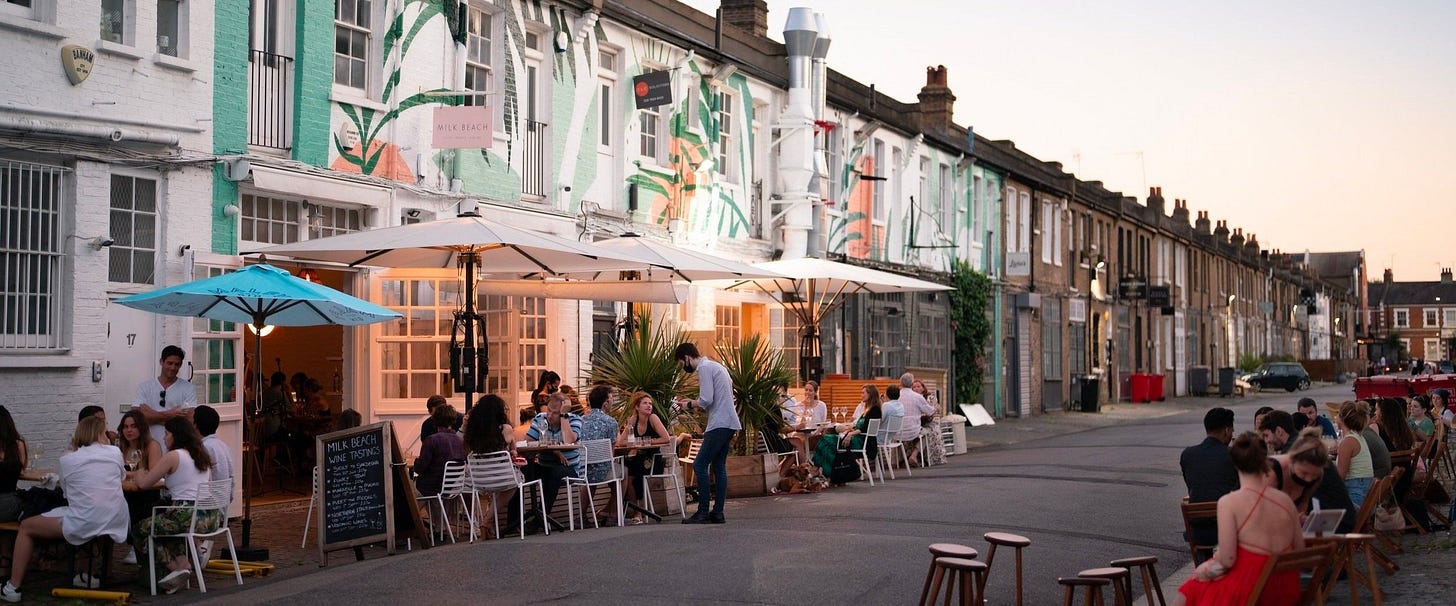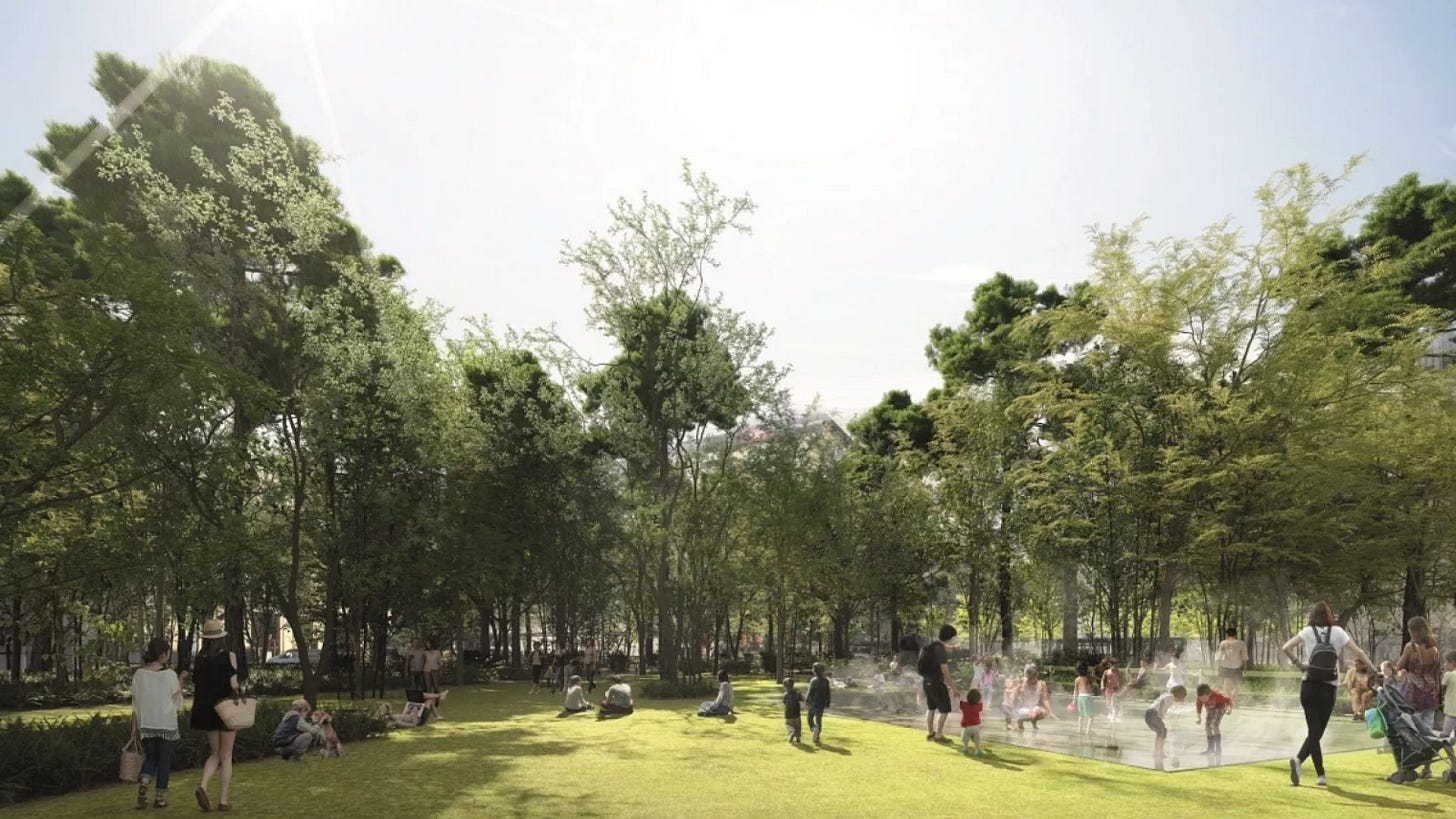The Rise of 15-Minute Cities
Transforming Real Estate for Enhanced Urban Experience and Sustainability
In today’s Newsletter I will provide an overview of 15-minute cities and why I believe this concept could be an important framework to adopt in order to achieve more human-centric and sustainable cities which in turn can provide enhanced value and financial returns.
15-minute cities: a brief overview.
The concept of 15-minute cities, championed by Carlos Moreno and embraced by figures like Mayor Anne Hidalgo for Paris, revolves around creating neighbourhoods where residents can access essential services and amenities within a 600m to 1km walk or bike ride from their homes. It envisions a compact radius where daily needs like groceries, schools, cultural experiences, and local parks are all within easy reach, promoting a sense of convenience and community closeness.

This model adapts to evolving work dynamics, potentially incorporating local office hubs within these 15-minute areas. Notably, while major cultural or shopping districts may fall beyond this radius, the focus remains on encouraging alternative modes of transport like walking, cycling, or public transit, without necessarily eliminating car use entirely. The aim is a coexistence of transportation methods, acknowledging that many cities are primarily designed for car-centric lifestyles.
In essence, the 15-minute city concept encourages a shift towards sustainable transportation and community-centric living, emphasising accessibility to daily necessities within a short distance, while recognising the need for larger city attractions that lie outside this immediate radius.
In this newsletter I will share with you the key areas where I believe real estate development can benefit from this concept:
Mixed-use neighbourhoods
Incorporating end-of-trip facilities.
Greener neighbourhoods
Digitisation.
Frictionless cities and communities allow people to thrive. In turn this will enhance the value of the places people spend time in everyday. For this reason I believe it’s important to pay attention to this concept and to understand how real estate development can support and benefit from it.
Lets dive in.
1. Mixed-use Neighbourhoods

Mixed-use development is a key aspect to help foster a vibrant community. It allows people easy access to essential services, leisure facilities, and workplaces within the 15-minute radius. By creating diverse spaces within proximity, it reduces the need for long commutes, promoting a more sustainable and cohesive urban ecosystem.
When defining the feasibility for a plot explore the opportunity to exploit the ground floor with the introduction of alternative uses that can serve the local community such as:
Local Retail services ⇒ to serve the community.
A local coworking space ⇒ frictionless productivity.
A nursery ⇒ enhancing the life of families.
Think about the value that the proposed ground floor uses can add to the community as well as your future customers that will inhabit the spaces being developed above.
2. Incorporating End of Trip facilities

Private development should provide adequate facilities for safe bicycle storage in order to incentivise the use of environmental mobility as well as keeping the surrounding streetscape uncluttered.
Building code and sustainability standards today require these facilities to be incorporated within developments, however I believe it’s good practice to make sure these spaces are thoughtfully designed in order to serve the customers.
When incorporating these facilities always think about:
Access from the street.
Circulation within the building.
How do you get to your bicycle from within the building.
Celebrate the facility, make it a feature within the building.
Changing room and shower layout efficiencies.
Promoting health and non-motorised transportation options it’s a great recipe for enhancing our wellbeing and happiness. Who wouldn’t want to have happy customers?
For a great example check out the bike park at 22 Bishopsgate, London.
3. More access to green space.
Incorporating green spaces, parks, and communal areas within developments contributes to a healthier and more enjoyable living environment. These spaces not only enhance the aesthetics of the neighbourhood but also promote social interaction, mental well-being, and environmental sustainability.
Since the pandemic, cities have increasingly started to return back to people, spaces and streets previously dedicated to cars. This has started to create small pockets of public space in close proximity to where people live and work. A few cities re doing this successfully:
Milan’s ‘Open Streets’ (Strade Aperte) programme. (See Photo below)
Stockholm’s one-minute city concept.
Paris’s tree planting programme, infilling urban underused urban space.
It’s encouraging to see this evolution taking place, it builds community, reduces cars and enhances safety. It democratises cities allowing more people to have access to outdoor spaces in closer proximity to where they live or work.
4. Digitisation
In order to ensure that people thrive in 15-minute neighbourhoods it’s key that their experience is as frictionless as possible. Traveling from A to B, accessing service X or Y should be as easy and simple as it can be.
Digital technology if planned well can help reduce friction in our daily life. This is a 2-way street and requires work from all the stakeholders involved: the municipality, private enterprises and citizens.
Buildings should be smart and provide people with the option to access digital services to allow them to:
Have groceries delivered.
Have parcels delivered at any time.
Ability to book and receive services on-demand / on-location.
Good practice would be to allow space where couriers can access lockers within the building where they can deliver goods even if the receiver is not present. This can be achieved by partnering with services like Amazon Hub.
In Summary
The current trend amongst people post-pandemic appears to be a desire for simpler life with less friction whilst minimising unnecessary stress. Flexible working and access to convenient services is now becoming the norm.
All of this should be celebrated as positive change. Real estate development plays a key role in fostering a frictionless ecosystem and an opportunity take a leading role in this.
15-minute cities can add tons of value to any development out there as it helps fostering these key aspects:
Mixed-use neighbourhoods.
Promote non-motorised transportation options.
Enhanced public space greening.
Digitised ecosystems.
Let me know what you think in the comments below.






